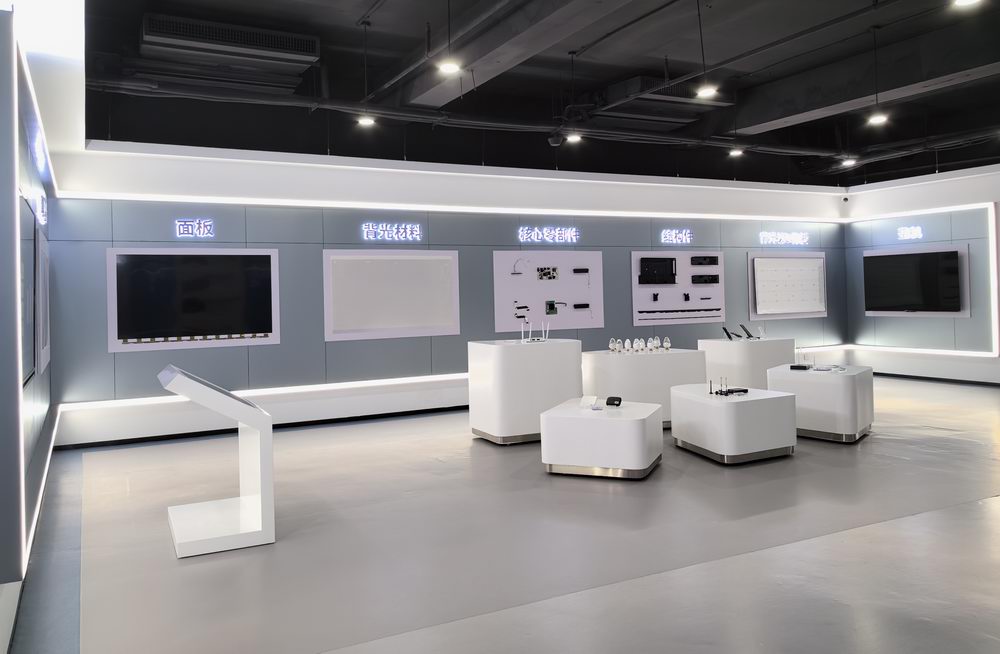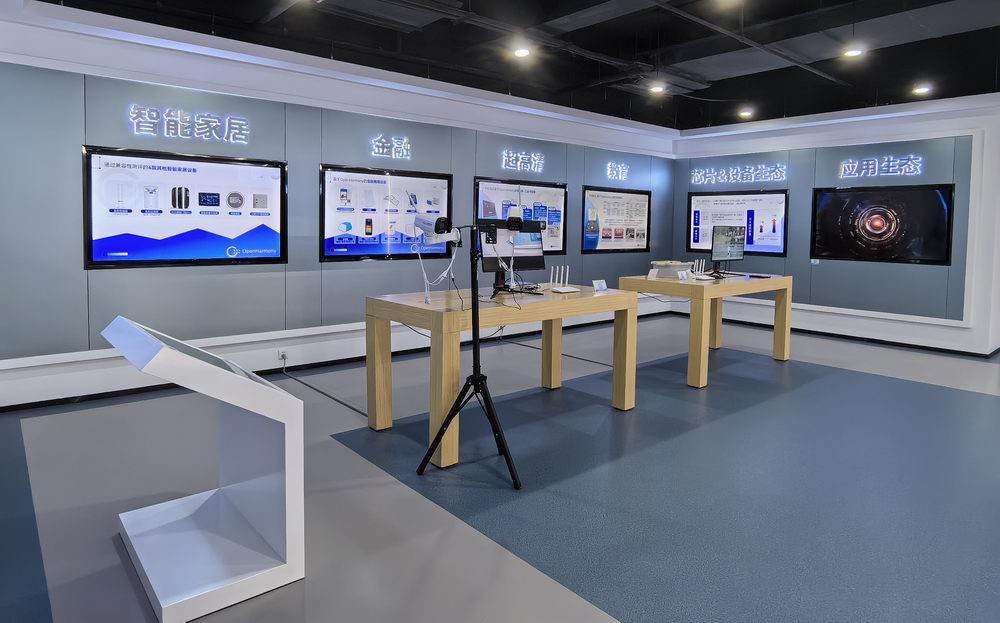Emerging Trends in IoT Security Research for 2024

In today's technology-driven world, IoT security is of paramount importance. The swift expansion of IoT devices introduces fresh challenges. On a daily basis, home networks encounter an average of 10 attacks, underscoring the necessity for strong security measures. Bitdefender intercepts around 1,736 threats every minute, highlighting the critical need for continuous research. The IoT Security Technology R&D and Application Base plays a vital role in supporting industry clusters, aiding businesses in navigating the ever-changing landscape. It is essential for companies to remain proactive in safeguarding their innovations and ensuring security.
Current State of IoT Security
Existing Challenges
Common Vulnerabilities
IoT devices face some serious security challenges. The most common vulnerabilities include buffer overflow and denial of service. These two issues account for over half of the vulnerabilities found in IoT devices. TV sets, smart plugs, digital video recorders, and routers show the highest vulnerability rates. TV sets top the list with a 34% vulnerability rate. Smart plugs follow with 18%, while digital video recorders and routers have 13% and 12%, respectively. These vulnerabilities expose devices to potential attacks, making security a top priority.
Impact on Industries
Industries relying on IoT technology feel the impact of these vulnerabilities. Manufacturing, healthcare, and transportation sectors use IoT devices extensively. Security breaches can disrupt operations, leading to financial losses and reputational damage. For example, a manufacturing plant might face downtime due to a compromised network. Healthcare facilities risk patient data exposure, while transportation systems may experience delays. Addressing these vulnerabilities is crucial for maintaining smooth operations across industries.
Recent Developments
Advances in Security Protocols
Recent developments in IoT security focus on strengthening protocols. Researchers are working on new methods to protect devices from attacks. Enhanced encryption techniques and secure communication channels are gaining attention. These advancements aim to safeguard data and ensure device integrity. By implementing robust security protocols, industries can reduce the risk of unauthorized access and data breaches.
Case Studies and Examples
Several case studies highlight successful IoT security implementations. A notable example involves a smart city project that integrated advanced security measures. The project used blockchain technology to secure data transmission between devices. This approach ensured data integrity and prevented unauthorized access. Another example comes from the healthcare sector. A hospital implemented machine learning algorithms to detect anomalies in network traffic. This proactive approach helped identify potential threats before they could cause harm. These examples demonstrate the effectiveness of recent security advancements in real-world scenarios.
Emerging Trends in IoT Security

Integration of Blockchain Technology
Benefits for IoT Security
Blockchain technology offers a fresh approach to IoT security. The decentralized nature of blockchain makes it tamper-resistant. This characteristic ensures that data remains secure and unaltered. IoT devices can benefit from this by having a reliable method to verify data integrity. Blockchain also provides transparency, which helps in tracking data flow. This transparency is crucial for identifying and addressing security breaches quickly. By using blockchain, IoT systems can achieve a higher level of trust and security.
Real-world Applications
Blockchain finds practical applications in various IoT scenarios. One notable use is in tracking product progress. Companies can track products during manufacturing, transportation, and sales. This tracking ensures that products reach their destination without tampering. Another application involves smart contracts. These contracts automate processes between IoT devices, reducing the risk of human error. For instance, a smart contract can automatically reorder supplies when inventory levels drop. This automation streamlines operations and enhances security.
Role of Machine Learning and AI
Enhancing Threat Detection
Machine learning and AI play a significant role in threat detection. These technologies analyze vast amounts of data to identify patterns. By recognizing unusual patterns, they can detect potential threats. This capability allows IoT systems to respond to threats in real-time. Machine learning models continuously learn from new data, improving their accuracy over time. This adaptability makes them invaluable for maintaining robust security.
Predictive Security Measures
AI also contributes to predictive security measures. Predictive analytics forecast potential security issues before they occur. This foresight enables companies to take preventive actions. For example, AI can predict when a device might become vulnerable to an attack. Companies can then update security protocols to mitigate risks. This proactive approach helps in minimizing potential damage and maintaining system integrity.
Edge Computing
Decentralized Security Solutions
Edge computing introduces decentralized security solutions. By processing data closer to the source, edge computing reduces latency. This proximity enhances the speed and efficiency of security measures. Decentralized processing also limits the data exposure to central servers. This limitation reduces the risk of large-scale data breaches. Edge computing empowers IoT devices with localized security, making them more resilient to attacks.
Case Studies
Several case studies highlight the benefits of edge computing in IoT security. Smart city projects often utilize edge computing to manage traffic data. By analyzing data locally, these projects can optimize traffic flow and enhance security. Another example involves healthcare facilities using edge computing to monitor patient data. This approach ensures that sensitive information remains secure and accessible only to authorized personnel. These examples demonstrate how edge computing can effectively bolster IoT security in real-world applications.
Zero Trust Security Model
Principles and Implementation
The Zero Trust Security Model stands out in IoT security. This model operates on a simple principle: never trust, always verify. Every device or user must prove their identity before accessing the network. This approach minimizes the risk of unauthorized access. The model requires continuous verification, ensuring that only trusted entities interact with IoT devices. Implementing Zero Trust involves setting strict access controls. Companies use advanced authentication methods to verify identities. This includes multi-factor authentication and biometric verification. These measures ensure that only legitimate users gain access to sensitive data.
Impact on IoT Networks
Zero Trust significantly impacts IoT networks. The model enhances security by reducing potential attack surfaces. IoT devices often connect to various networks, increasing vulnerability. Zero Trust limits access, protecting devices from external threats. This model also improves data integrity. Continuous verification ensures that data remains secure and unaltered. IoT networks benefit from increased resilience against cyber-attacks. The model's principles align with emerging technologies like blockchain. Blockchain's decentralized nature complements Zero Trust's security measures. Together, they provide robust protection for IoT systems. This combination offers a reliable framework for securing IoT networks in the future.
IoT Security Technology R&D and Application Base

Supporting Industry Cluster
The IoT Security Technology R&D and Application Base plays a crucial role in bolstering the supporting industry cluster. Huizhou Zhongkai High-tech Zone stands out as a hub for innovation and development. The zone attracts numerous enterprises focused on IoT security advancements. Companies benefit from a collaborative environment that fosters growth and innovation. The base provides resources and expertise to help businesses tackle IoT security challenges. Enterprises gain access to cutting-edge research and development facilities. These resources empower businesses to develop robust security solutions.
Contributions to IoT Security
The contributions of the IoT Security Technology R&D and Application Base to IoT security are significant. The base supports enterprises in developing advanced security technologies. Businesses receive guidance on implementing effective security measures. The base offers training programs to enhance the skills of industry professionals. These programs ensure that companies stay ahead of emerging threats. The base also facilitates partnerships between enterprises and research institutions. These collaborations drive innovation and lead to groundbreaking security solutions.
Notable Projects
Several notable projects have emerged from the IoT Security Technology R&D and Application Base. One project focuses on integrating blockchain technology into IoT systems. This initiative aims to enhance data integrity and prevent unauthorized access. Another project explores the use of machine learning algorithms for threat detection. The project helps businesses identify potential security breaches in real-time. The base also supports projects that leverage edge computing for decentralized security solutions. These projects demonstrate the base's commitment to advancing IoT security.
The Zhongkai High-tech Zone National Foreign Trade Transformation and Upgrading Base (Electronic Information) Cloud Platform plays a pivotal role in supporting enterprises. The platform provides essential services to businesses within the high-tech zone. Companies benefit from cloud-based solutions that streamline operations. The platform enhances data management and security for enterprises. Businesses gain a competitive edge by leveraging the platform's capabilities. The cloud platform assists companies in navigating the complex landscape of IoT security.
Role of Specific Locations and Initiatives
Huizhou Zhongkai High-tech Zone
Contributions to IoT Security
Huizhou Zhongkai High-tech Zone stands out as a beacon for IoT security innovation. The zone attracts top-tier companies focused on developing cutting-edge security solutions. Enterprises in this area benefit from a collaborative environment that fosters creativity and problem-solving. The IoT Security Technology R&D and Application Base plays a pivotal role here. This base supports the supporting industry cluster by providing resources and expertise. Companies access state-of-the-art research facilities, which help them tackle IoT security challenges head-on. The base also offers training programs that keep professionals updated on the latest security trends. These initiatives ensure businesses stay ahead of potential threats.
Notable Projects
Several groundbreaking projects have emerged from the Huizhou Zhongkai High-tech Zone. One project focuses on integrating blockchain technology into IoT systems. This initiative aims to enhance data integrity and prevent unauthorized access. Another project explores the use of machine learning algorithms for threat detection. This helps businesses identify potential security breaches in real-time. The zone also supports projects leveraging edge computing for decentralized security solutions. These efforts demonstrate the zone's commitment to advancing IoT security.
National Foreign Trade Transformation and Upgrading Base
Initiatives in IoT Security
The National Foreign Trade Transformation and Upgrading Base plays a crucial role in supporting enterprises within the Huizhou Zhongkai High-tech Zone. The Electronic Information Cloud Platform offers essential services to businesses. Companies benefit from cloud-based solutions that streamline operations and enhance data security. The platform provides tools that help enterprises manage their data efficiently. Businesses gain a competitive edge by leveraging these advanced capabilities. The platform assists companies in navigating the complex landscape of IoT security.
Future Prospects
The future looks promising for enterprises in the Huizhou Zhongkai High-tech Zone. The National Foreign Trade Transformation and Upgrading Base continues to innovate and expand its offerings. Companies can expect even more advanced tools and resources to support their growth. The platform's focus on IoT security ensures businesses remain resilient against cyber threats. As the zone attracts more enterprises, the collaborative environment will foster further innovation. This synergy will drive the development of robust security solutions, benefiting the entire industry cluster.
The blog explored the dynamic landscape of IoT security, highlighting key trends and challenges. The Zhongkai High-tech Zone National Foreign Trade Transformation and Upgrading Base (Electronic Information) Cloud Platform plays a pivotal role in supporting enterprises. Companies benefit from this platform's advanced tools, which streamline operations and enhance data security. Future research should focus on developing robust solutions to stay ahead of cyber threats. The importance of proactive measures cannot be overstated, as they ensure the resilience and integrity of IoT systems in an ever-evolving digital world.
See Also
Forecasting the Future of Zhongkai High-tech Zone's Trade Transformation
Maximizing Growth Potential in High-tech Zones
Zhongkai High-tech Zone: Leading the Way in Terminal Innovations
Zhongkai High tech Zone National foreign trade transformation and Upgradi Base(Electronic Information)Cloud Platform.
Address: Zhongkai High-tech Zone,Huizhou City ,Guangdong,China
E-mail: huizhoueii@163.com 13510001271@163.com
Tel: +86-0752-3279220 Mobile: +86-13510001271


